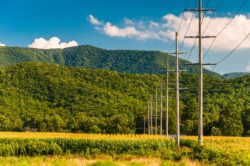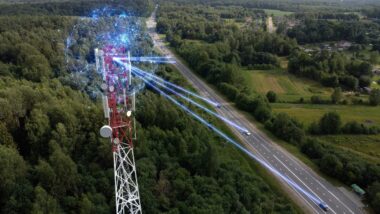Top Class Actions’s website and social media posts use affiliate links. If you make a purchase using such links, we may receive a commission, but it will not result in any additional charges to you. Please review our Affiliate Link Disclosure for more information.

Cal Fire Announces Wildfire Plan
The plan proposed by Cal Fire would involve removing both native and invasive vegetation. According to the plan, firefighters would use chainsaws and controlled fires to thin out forests and brush on approximately half a million acres in California each year. However, some environmental advocates have argued that this vegetation removal may actually help to spread invasive grasses and increase the risk of wildfires.
According to Travis Bean, a weed science specialist from UC Riverside, non-native plants used as landscaping in communities or along the sides of highways may contribute to the spread of wildfires due to their low burn temperature and ability to burn very fast. “It’s like we drizzle all our roadsides with just a little bit of lighter fluid,” he said. “If we don’t manage them, the fire’s going to get off the roadside and into that chaparral, climb up that hill and get into that multimillion-dollar housing development.”
While Cal Fire claims that reducing brush and thinning trees will help to prevent the spread of forest fires, some scientific research suggests that other methods may be more effective. And risks are higher with winds and dry weather.
While Cal Fire has said little about whether building new homes will be prohibited in zones likely to be hit by wildfires, wildfire researchers believe that this approach would do the most to protect the environment from future fires.
According to research on wildfires, many blazes grow by igniting houses and non-native landscaping vegetation. Some research indicates that houses may do more to spread wildfires than large trees and natural vegetation. Additionally, studies suggest that housing built in and on the border of areas deemed to be vulnerable to wildfires is a major cause of new fires being ignited.
Approximately 90 percent of California fires are initially started by people, rather than by natural causes. Additionally, a recent study from the University of Wisconsin–Madison’s Department of Forest and Wildlife Ecology and the U.S. Forest Service estimates that approximately 90 percent of homes destroyed by California fires were constructed in rural areas that are at higher risk for wildfires than cities.
Although California has instituted regulations requiring new home construction to use fire-resistant materials and ensure that firefighters will have access to water, the state has so far refused to restrict future construction in high risk areas. According to the Governor’s Office, the state’s pioneering spirit would be hindered by the restriction of new home construction.
According to Char Miller, a wildfire policy expert and professor of environmental analysis at Pomona College, Cal Fire’s plan to thin out vegetation is a deliberate distraction, and it ignores more important issues.
“There’s no conversation other than the vegetation management conversation about what to do about wildfires,” he said. While wildfire policy experts are lobbying for an open debate on the solution for preventing future fires, state officials are focusing on protecting existing communities, rather than planning for future ones.
California wildfires have cost billions of dollars over the past several years, as well as destroying tens of thousands of homes and displacing entire communities. Victims who suffered injuries, damage to properties or vegetation, loss of income, or other losses due to wildfires in California may be eligible to pursue compensation for these damages through a class action lawsuit.
Join a Free California Wildfire Property Damage Lawsuit Investigation
If you or a loved one suffered property damage in the Camp Fire, Woolsey Fire, Hill Fire or last year’s Thomas Fire, legal help is available to help you through the claim process with your insurance company.
This article is not legal advice. It is presented
for informational purposes only.
ATTORNEY ADVERTISING
Top Class Actions is a Proud Member of the American Bar Association
LEGAL INFORMATION IS NOT LEGAL ADVICE
Top Class Actions Legal Statement
©2008 – 2024 Top Class Actions® LLC
Various Trademarks held by their respective owners
This website is not intended for viewing or usage by European Union citizens.
Get Help – It’s Free
Join a Free California Wildfire Property Damage Lawsuit Investigation
If you qualify, an attorney will contact you to discuss the details of your potential case at no charge to you.
PLEASE NOTE: If you want to participate in this investigation, it is imperative that you reply to the law firm if they call or email you. Failing to do so may result in you not getting signed up as a client or getting you dropped as a client.
E-mail any problems with this form to:
Questions@TopClassActions.com.
Oops! We could not locate your form.












